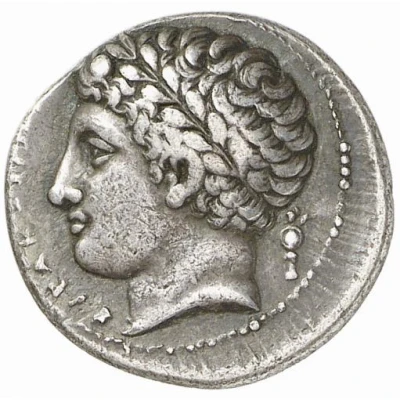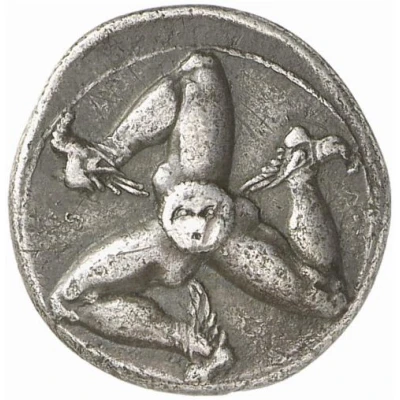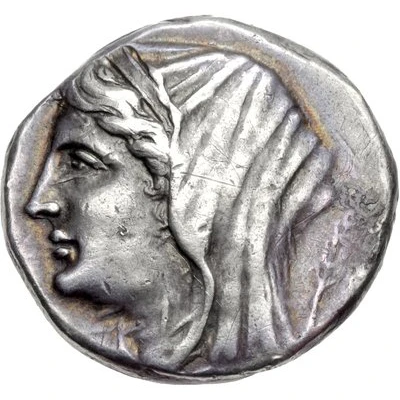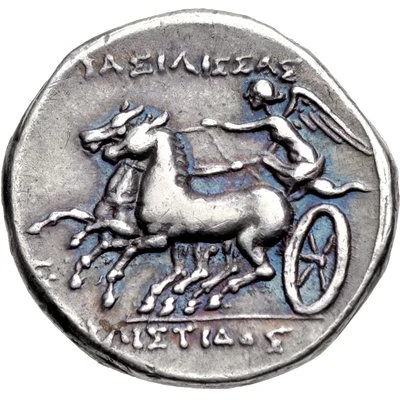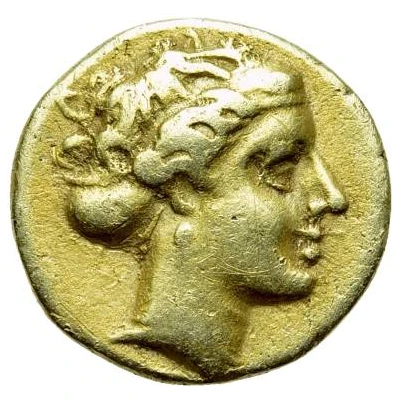
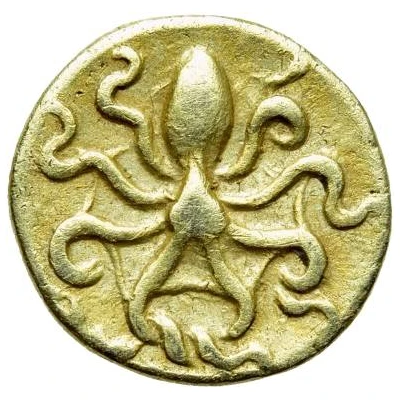

5 Litrai 310 BC - 305 BC
| Electrum | 0.75 g | 8.5 mm |
| Issuer | Syracuse (Sicily) |
|---|---|
| Tyrant | Agathocles (317 BC - 304 BC) |
| Type | Standard circulation coin |
| Years | 310 BC - 305 BC |
| Value | 5 Litrai |
| Currency | Litra |
| Composition | Electrum |
| Weight | 0.75 g |
| Diameter | 8.5 mm |
| Shape | Round (irregular) |
| Technique | Hammered |
| Orientation | Variable alignment ↺ |
| Demonetized | Yes |
| Updated | 2024-10-10 |
| Numista | N#407935 |
|---|---|
| Rarity index | 100% |
Reverse
Octopus.
Comment
The electrum coinage at Syracuse was studied by Jenkins and broken into four denominations and groups, the type of the nymph/octopus being the least recorded of the denominations. Jenkins attributed this type to the first group on account of the relatively high gold percentage present in the studied examples. The use of the octopus is interesting in that it appeared heavily on the minor bronze coinage of Dionysios I during the early 4th century BC, but was otherwise seldom-seen elsewhere in the city’s coinage.
There is some contention about the value of Syracuse electrum and they may be listed at double their value. Jenkins claims that the "the values usually stated for the Syracuse electrum are about twice the true ones" as they are about half the weight of Carthaginian electrums.
Jenkins, Electrum, Group A; BAR issue 12; SNG Newnham Davis 76.
Interesting fact
One interesting fact about the Standard circulation coin 5 Litrai (310 BC - 305 BC) from Syracuse (Sicily) made of Electrum weighing 0.75 g is that it features the image of a dolphin on one side, which was a symbol of the city of Syracuse and represented its maritime power and wealth.
Price
| Date | Mintage | VG | F | VF | XF | AU | UNC |
|---|---|---|---|---|---|---|---|
| ND (310 BC - 305 BC) | - | - | - | - | - | - |
Values in the table are based on evaluations by sales realized on Internet platforms. They serve as an indication only for 5 Litrai (310 BC - 305 BC) coin.
